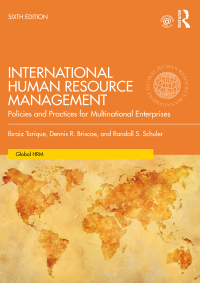Expanding the international workforce to include non-parent-country employees has brought increased capabilities and decreased costs along
Question:
Expanding the international workforce to include non-parent-country employees has brought increased capabilities and decreased costs – along with a new set of compensation problems. For example, the director of international HR for a large multinational IT company faced just such a dilemma:
It seems as though our international compensation program has gotten out of hand. I have parent-country expatriates, third-country nationals, and inpatriates yelling at me about their allowances. [In addition] headquarters is yelling at me because the costs are too high. Quite frankly, I can’t seem to get any answers from our consultant about how to handle compensation for such a global workforce, and no one else in the industry seems to know how to approach the problem, either.
This IT multinational has 40 highly paid US expatriates working as fi eld engineers and marketing managers in 14 countries. But it also has foreign national employees from the Philippines, Japan, and Bolivia working alongside the US employees in eight locations worldwide. And, finally, it has foreign nationals from Thailand and the Philippines working with US nationals at the organization’s headquarters. In all cases, it is the firm’s policy to send such employees out on foreign assignments for less than five years and then return them to their home countries. An example of the types of complaints that were being received from the expatriates involves the following problem concerning inpatriate employees working at headquarters.......
Case study questions
1. What would you do if you were the IHR manager?
2. What kind of global compensation policy would deal effectively with this sort
of problem?
Step by Step Answer:

International Human Resource Management Policies And Practices For Multinational Enterprises
ISBN: 9781138489493,9780429806124
6th Edition
Authors: Ibraiz Tarique , Dennis R. Briscoe , Randall S. Schuler





